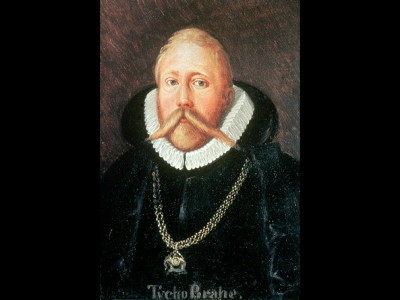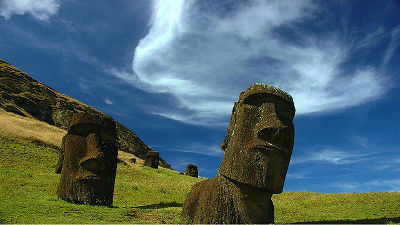An element whose existence was not yet known at the time was discovered in a 16th century alchemist's workshop.

Chemical analysis of fragments of glass and ceramic ware from Tycho Brahe's laboratory at Uraniborg on the island of Ven (Sweden) | Heritage Science | Full Text
https://heritagesciencejournal.springeropen.com/articles/10.1186/s40494-024-01301-6

Chemical Analyses Find Hidden Elements from Renaissance Astronomer Tycho Brahe's Alchemy Laboratory
https://www.sdu.dk/en/om-sdu/fakulteterne/naturvidenskab/nyheder-2024/tycho-brahe-alchemy
Analysis of Renaissance Alchemist's Lab Reveals Presence of a Surprise Element : ScienceAlert
https://www.sciencealert.com/analysis-of-renaissance-alchemists-lab-reveals-presence-of-a-surprise-element
Born into a powerful Danish aristocratic family, Brahe received a high level of education and is said to have been interested in astronomy and the creation of accurate surveying instruments, but at the same time he also had a strong interest in alchemy. Having been bestowed a mansion on the island of Vän by King Frederick II of Denmark, Brahe built an astronomical observatory and alchemy workshop called Uraniborg on the island, where he conducted various research.
Later, as the Danish kings changed and Brahe lost his backing, Uraniborg was abandoned in 1597 and destroyed after Brahe's death in 1601. Today, little remains of Uraniborg, but excavations from 1988 to 1990 uncovered fragments of pottery and glass in the old gardens.
This is what Uraniborg is thought to have looked like.

A research team led by Professor
In this study, the area surrounded by the red frame in the photo below was analyzed.

Analysis revealed that the fragments contained concentrations of trace elements such as nickel , copper , zinc , tin , antimony , tungsten , gold , mercury , and lead , suggesting that elements such as mercury and gold, which were commonly used by alchemists at the time to treat illnesses, were also used in Brahe's experiments.
One of the most interesting discoveries is the existence of tungsten, which was first officially named in 1781 when the Swede Carl Wilhelm Scheele succeeded in isolating it, but it had not even been publicly reported in the 16th century when Brahe was working on alchemy.
'What's most intriguing is that the elements were found in higher concentrations than expected, suggesting that they were concentrated,' Rasmussen said. 'Tungsten is very mysterious. It hadn't even been described at the time. What should we infer from the presence of tungsten in the debris from Tycho Brahe's alchemy workshop?'
According to the research team, in the early 1500s, German mineralogist Georg Agricola had found a clue to separating tungsten from tin ore, and the research team speculates that Brahe may have known about this and succeeded in separating tungsten on his own.

Alchemists at the time were secretive and did not share the results of their research with others, so it is not surprising that Brahe did not report the isolation of tungsten. Brahe apparently developed medicines for the plague, syphilis, and leprosy using alchemy, but like other alchemists, he shared his recipes only with a select few individuals.
'It may seem odd that Tycho Brahe was involved in both astronomy and alchemy, but it makes sense when you understand his worldview. He believed there were clear connections between celestial bodies, terrestrial materials, and the organs of the body,' Grinder-Hansen said.
Related Posts:
in Science, Posted by log1h_ik







